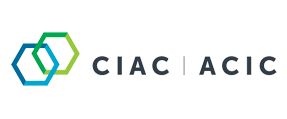Discussing Advanced Recycling with CIAC PD Director, Christa Seaman
April 27, 2022
The CIAC Plastics Division recently published a white paper, Advanced Recycling: Seizing the Circular Plastics Opportunity which outlines the important role advanced recycling can play in Canada’s modern, sustainable future. The paper explains the current recycling landscape in Canada, the gaps and barriers to developing a circular economy for plastics and highlights the opportunity advanced recycling offers Canada along with details on the investment and policy decisions needed to grow advanced recycling capabilities in the country.
We sat down with Christa Seaman, Director of the CIAC Plastics Division, to learn a bit more about advanced recycling and what it could mean for Canada’s economic and environmental future.
To start off, it seems like advanced recycling (AR) or what some people call chemical recycling is getting a lot of attention lately. There is also a lot of misinformation being spread. What exactly is advanced recycling and why is it so important?
It’s a term that we’re seeing being used more and more in the media and by the public, which is great because it’s an incredibly important technology for the future of Canada’s natural environment and economy.
Advanced recycling technologies break down plastics to their original molecules which can then be turned into new products that can be recycled and reused over and over without breaking down or compromising product integrity. Essentially, advanced recycling technologies transform plastics back into their original molecules (monomers or polymers) which can then be formed into a wide range of new plastics products.
Ontario is currently looking at advanced recycling and determining what role it will play in the province’s recycling future. Some groups have claimed that AR facilities are bad for the environment – is this true?
Ontario is revamping its Blue Box Program which will accept a wider range of plastic products. At the same time, the province is examining the role advanced recycling will play in Ontario’s future. With more types of plastic products being accepted, advanced recycling can help ensure more plastics are recycled and never reach landfills.
To meet recovery and recycling targets set out by the Ontario Blue Box Program, both mechanical and advanced recycling will be critical. Not only will increasing recycling reduce the volume of plastics going to landfill, which in itself has environmental benefits, there are also emissions-related benefits associated with plastics recycling. A circular economy for plastics in Canada could result in an annual GHG emissions savings of 1.8 MT of CO2, according to a recent study by Deloitte.
Although further investment is needed to expand AR operations, there are quite a few success stories from Canadian companies. Can you give us a couple of concrete examples?
There are plenty of Canadian success stories. Two that come to mind involve CIAC PD members. GreenMantra Technologies is an advanced recycling company based in Brantford, Ontario. Their unique technology allows them to process various types of plastics, including many items that can’t be recycled mechanically, and turn them into useful products including different types of asphalt, waxes, and other products.
Recently, GreenMantra partnered with another CIAC member, NOVA Chemicals, where the equivalent of 700,000 plastics bags was recycled and then turned into two pathways and a parking lot.
Quebec-based Pyrowave is another CIAC PD member making headlines and showing lots of success. The company recently entered into a joint development agreement with the Michelin Group.
With Pyrowave’s innovative technology, it is possible to generate recycled styrene from plastics found in packaging, insulation panels and/or household appliances. This recycled styrene is used in the production of polystyrene and synthetic rubber for tires and all sorts of consumer products.
The two companies are working together to fast‑track the industrialization of Pyrowave technology, working toward certification and commercial roll-out in international markets.
What are the main barriers to expanding AR throughout Canada?
One of the main obstacles for advanced recycling right now is sourcing enough post-consumer plastic to have a steady supply to meet potential demand.
Many global brands are implementing recycled content minimums which are already creating demand for recycled plastic recycled content in packaging and countless important plastic products. It’s projected that plastic demand will triple by 2050 and 60 per cent of that demand can be met by recycled plastics. Extended Producer Responsibility Programs (EPR) are being implemented in provinces throughout Canada and w will help increase the collection and recovery rates of post-consumer plastics.
Another key obstacle is dated technology in sortation facilities. Investments in modern technology are critical, including leading-edge optical sensors, artificial intelligence, and robotics. These investments will ensure higher quality sorted and consistent feedstock is available for all recycling facilities.
Currently, the supply of recycled plastics only meets six per cent of real demand. According to Environment and Climate Change Canada, the recycling infrastructure capacity gap will require a capital investment of $4.6 – $6.5 billion. As such, there is a need for government and industry to work together to invest in the scale-up and commercialization of AR technology. This is why the CIAC Plastics Division has been urging Federal and Provincial governments to work with industry to create a public-private Circular Plastics Innovation and Infrastructure Fund.
The ultimate goal is to develop a circular economy for plastics in Canada, one where plastics are recognized and reused as a valuable resource rather than waste. Many point out AR can’t do it all and mechanical recycling will have a key role in the years to come. Do you think both types of recycling are needed to reach this goal?
Both mechanical and advanced recycling play important roles in developing a circular economy for plastics in Canada.
While mechanical recycling works well for plastics such as beverage bottles, advanced recycling can utilize those plastics that are difficult to process mechanically, like flexible multilayer pouches, food and cosmetic-grade plastics, and textiles.
That’s where advanced recycling comes into play. As technology advances, these two systems will work hand-in-hand.





